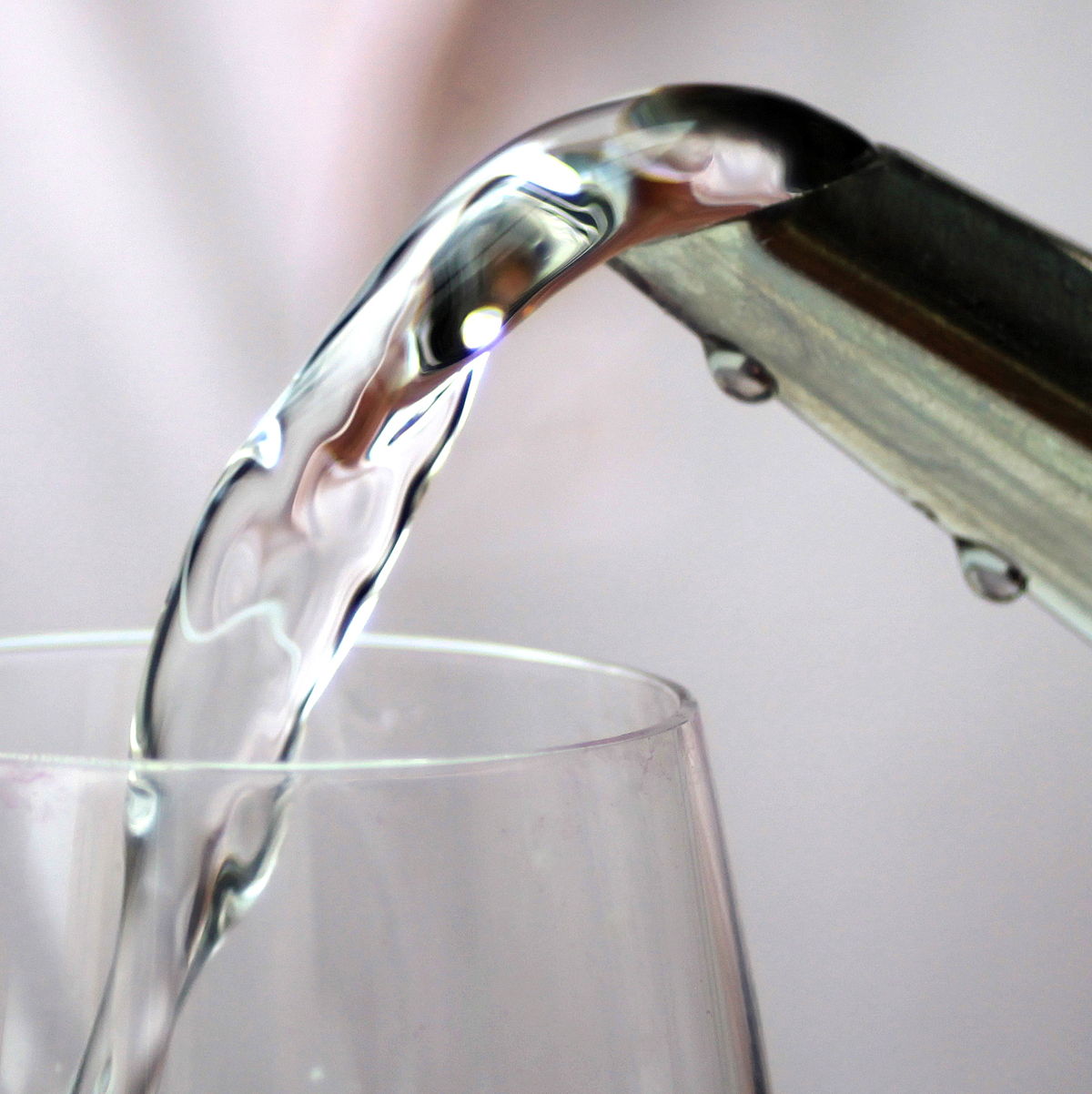Thank you! The wikipedialink is absolutely not relevant in terms of a Camino imo.
So yes it would be interesting if you could provide objective links

.
A bigger partial chapter from UpToDate in regards to Fluids and Dehydration. Written by Dr Richard Stern.
It is very long. Ignore if not interested.
PATHOGENESIS OF AND DEFENSE AGAINST HYPOTONIC HYPONATREMIA
Hypotonic hyponatremia results from the intake (ie, oral, intravenous, other absorption) and subsequent retention of water [
3,5-7].
The major defense against hyponatremia is the capacity to excrete large volumes of urine with a low concentration of sodium and potassium (ie, electrolyte-poor water):
●When water is ingested or absorbed causing even slight hypotonicity, both thirst and antidiuretic hormone (ADH; also called vasopressin) release are normally suppressed [
8]. ADH is produced by hypothalamic neurons that receive inputs from osmoreceptors that respond to the serum sodium concentration and from baroreceptors that respond to the status of the circulation [
9]. Suppression of ADH secretion requires normal functioning of osmoreceptors and the absence of signals from baroreceptors that can stimulate ADH release even when the serum sodium concentration is low.
●Excretion of electrolyte-poor water is accomplished by reabsorbing salt without water in the water-impermeable ascending limb of the loop of Henle and distal convoluted tubule (known as diluting sites) [
10]. Excretion of electrolyte-poor water also requires that the renal tubule segments beyond the diluting sites (the later distal tubule segments and collecting duct) are relatively impermeable to water; water impermeability of these sites requires that the epithelium contain very few water channels (aquaporins). High levels of ADH result in insertion of water channels in the collecting duct while low levels of ADH allow these water channels to be removed from the epithelium [
5].
Thus, a water load will, in normal individuals, be rapidly excreted as the dilutional fall in serum tonicity suppresses the release of ADH (
figure 1), thereby allowing excretion of the excess water in a dilute urine.
The maximum attainable urine volume in normal individuals on a regular diet is in excess of 10 L/day. The normal diluting mechanisms of the kidney can produce urine with an osmolality that is at least as low as 100 mosmol/kg and often as low as 50 mosmol/kg. A typical western diet generates approximately 900 mosmol of solute daily, which is composed of approximately one-half urea (derived from dietary protein) and one-half sodium and potassium salts. On such a diet, urine with an osmolality of 50 mosmol/kg has a sodium plus potassium concentration of approximately 12 mEq/L. Excretion of 900 mosmol of solute at a concentration of 50 mosmol/L will result in 18 L of electrolyte-poor urine. If the diet is lower in salt, potassium, and protein, the capacity to excrete large volumes of urine will be less. As an example, excretion of 300 mosmol of solute at a concentration of 50 mosmol/L will result in only 6 L of electrolyte-poor urine. However, this still provides an enormous range of protection against the development of hyponatremia since the daily fluid intake in most healthy individuals is less than 2 to 2.5 L/day.
In contrast to the response in normal individuals, patients who develop hyponatremia typically have an impairment in renal water excretion, most often due to an inability to suppress ADH secretion [
11]. An uncommon exception occurs in patients with primary polydipsia who can become hyponatremic because they rapidly drink such large quantities of fluid that they overwhelm the excretory capacity of the kidney even though ADH release is appropriately suppressed. (See
'Primary polydipsia due to psychosis' below.)
CLASSIFICATION OF HYPOTONIC HYPONATREMIA
Hyponatremia occurs when water intake exceeds water excretion; it can result from water intake that is large, water excretion that is low, or a combination of these abnormalities. Because excretion of electrolyte-poor water is the normal defense against hyponatremia, we classify the causes of hyponatremia according to the body's ability to excrete dilute urine and, if that is impaired, the reason for the impairment.
Other classification systems divide hyponatremia into hypovolemic, hypervolemic, and euvolemic hyponatremia. However, determining a patient's volume status is often difficult (particularly distinguishing hypovolemia and euvolemia). In addition, classification of hyponatremia by volume status is most helpful in defining the reason for failure to suppress antidiuretic hormone (ADH) secretion. (See
'Impaired urine dilution due to unsuppressed ADH secretion' below.)
Unimpaired urine dilution
Primary polydipsia due to psychosis — Primary polydipsia, a disorder in which there is a primary increase in thirst, is most often seen in patients with psychiatric illnesses [
12-17]. As an example, one study of 239 hospitalized patients with mental illness found that 6.6 percent had a history compatible with compulsive water drinking and that one-half of these had intermittent symptoms of hyponatremia due to transient water retention [
18].
It is presumed that a central defect in thirst regulation plays an important role in the pathogenesis of polydipsia [
15,19]. In some cases, for example, the osmotic threshold for thirst is reduced
below the threshold for the release of ADH [
20]. In contrast to normal subjects in whom the thirst threshold is roughly equal to or a few mosmol/kg
higher than the threshold for ADH [
21], these patients will continue to drink until the plasma osmolality is less than the threshold level. This may be difficult to achieve, however, since ADH secretion will be suppressed by the fall in plasma osmolality, resulting in rapid excretion of the excess water and continued stimulation of thirst. The mechanism responsible for abnormal thirst regulation in patients with primary polydipsia is unclear.
Normal subjects can excrete more than 400 to 600 mL of urine per hour, a response that is mediated by suppression of ADH secretion and the subsequent formation of a dilute urine with a minimum osmolality between 40 and 100 mosmol/kg. If ADH regulation and kidney function are intact, primary polydipsia should not lead to clinically important disturbances in the plasma sodium concentration without a massive increase in water intake. Thus, the serum sodium concentration is usually normal or only slightly reduced in primary polydipsia since the excess water is readily excreted [
13]. These patients may be asymptomatic or present with complaints of polydipsia and polyuria. (See
"Evaluation of patients with polyuria".)
Water intake may occasionally exceed 400 to 600 mL per hour, particularly in institutionalized patients with severe psychosis [
17] and may produce fatal hyponatremia even though the urine is maximally dilute with an osmolality below 100 mosmol/kg [
22,23]. Symptomatic hyponatremia can also be induced with an acute 3- to 4-liter water load. This is sometimes seen in anxious patients preparing for a radiologic examination or in those attempting to dilute their urine to avoid a positive urine drug test [
24].
However, some patients with polydipsia who become hyponatremic have a higher urine osmolality than polydipsic patients who remain normonatremic, indicating a concurrent increase in ADH release and/or response [
12,19,25,26]. A number of different abnormalities in ADH regulation have been identified in psychotic patients, each of which can impair water excretion. Studies in patients who have had at least one episode of hyponatremia have revealed the following defects [
19]:
●Transient stimulation of ADH release during acute psychotic episodes, producing the syndrome of inappropriate ADH secretion (SIADH) [
25,27].
●An increase in the net renal response to ADH so that, at the same plasma ADH levels, psychotic patients have a higher urine osmolality and therefore a lower rate of free water excretion than healthy controls [
19]. How this occurs is not known.
●Antipsychotic or antidepressant drugs (such as
fluoxetine) may also produce SIADH in a few patients. As examples,
carbamazepine and fluoxetine can produce hyponatremia with an SIADH-like clinical picture [
28,29].
●A downward resetting of the osmostat regulating ADH release. As a result, a lower-than-normal plasma sodium concentration is required to completely suppress ADH release and excrete a water load. (See
"Treatment of hyponatremia: Syndrome of inappropriate antidiuretic hormone secretion (SIADH) and reset osmostat".)
●Transient ADH release due to nausea [
17].
The net effect is that some modestly hyponatremic patients with primary polydipsia do not dilute their urine maximally, as would be expected if ADH were suppressed by hypoosmolality [
19]. The likelihood of developing hyponatremia will be increased further by the presence of a cause for enhanced ADH release, such as nausea, stress, or concurrent diuretic therapy [
24,30].
Primary polydipsia can also occur with hypothalamic lesions that affect the thirst center, as can be seen with infiltrative diseases such as sarcoidosis [
31]. Low dietary solute intake can contribute to the development of hyponatremia by limiting water excretion even if the secretion of ADH is appropriately suppressed. (See
'Low dietary solute intake' below.)
As in any patient with polydipsia and polyuria, the possibility of diabetes insipidus should be considered in patients with psychiatric illness who present with these symptoms in the absence of hyponatremia. If compliance is possible, we recommend a water restriction test to distinguish between primary polydipsia and diabetes insipidus. An alternative in the uncooperative patient is to increase the plasma osmolality via a slow infusion of hypertonic
saline with concomitant measurement of copeptin levels. (See
"Evaluation of patients with polyuria".)
Measuring the urine osmolality is also important in polydipsic patients who are hyponatremic. Pure primary polydipsia should be associated with appropriate suppression of ADH release and a urine osmolality below 100 mosmol/kg. A higher urine osmolality, which is often present, suggests at least a contributory role for increased ADH release or responsiveness [
12,19,26]. (See
"Diagnostic evaluation of adults with hyponatremia".)
There is no proven specific therapy for primary polydipsia with or without hyponatremia in psychotic patients. Acutely, limiting water intake will rapidly raise the plasma sodium concentration as the excess water is readily excreted in a dilute urine. The risk of inducing osmotic demyelination in this setting is unclear [
32,33].
Over the long term, limiting the use of drugs that cause dry mouth, restricting fluid intake, and frequent weighing (to detect water retention) all may be helpful. Some clinicians have tried the
tetracycline derivative
demeclocycline, which induces reversible ADH resistance; however, this agent has not generally been effective [
34]. (See
"Treatment of hyponatremia: Syndrome of inappropriate antidiuretic hormone secretion (SIADH) and reset osmostat"
- Adrogué HJ, Madias NE. Hyponatremia. N Engl J Med 2000; 342:1581.
- Rose BD, Post TW. Clinical Physiology of Acid-Base and Electrolyte Disorders, 5th ed, McGraw-Hill, New York 2001. p.720.
- Yeates KE, Singer M, Morton AR. Salt and water: a simple approach to hyponatremia. CMAJ 2004; 170:365.
- Verbalis JG, Goldsmith SR, Greenberg A, et al. Hyponatremia treatment guidelines 2007: expert panel recommendations. Am J Med 2007; 120:S1.
- Chung HM, Kluge R, Schrier RW, Anderson RJ. Clinical assessment of extracellular fluid volume in hyponatremia. Am J Med 1987; 83:905.






















